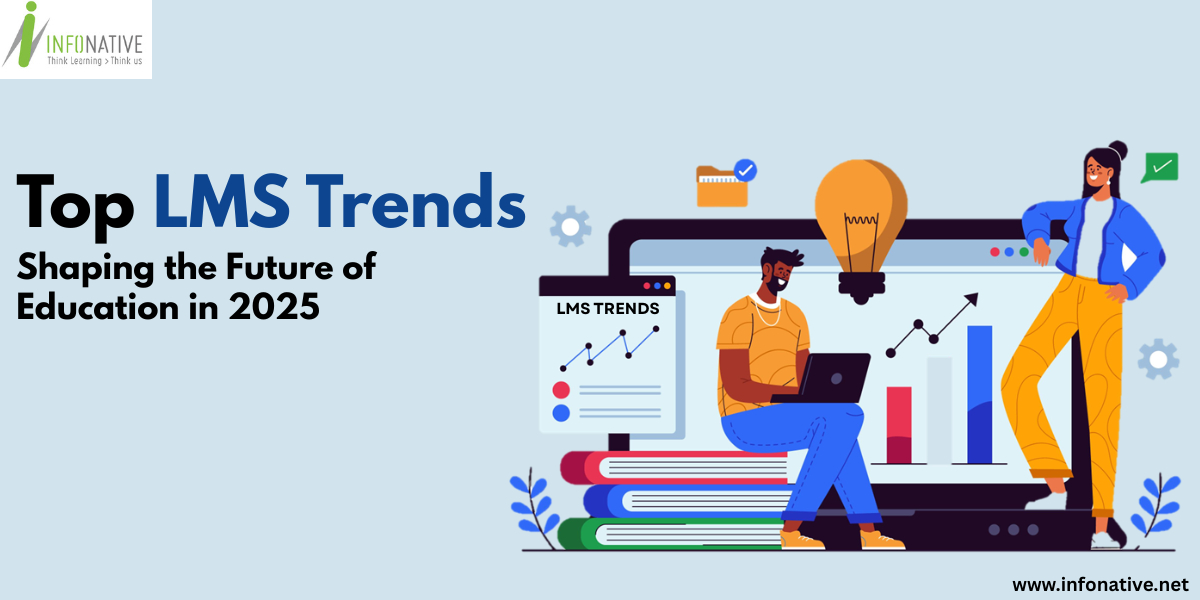The world of education evolving rapidly, and Learning Management Systems (LMS) leading the way in this transformation. As we move through 2025, LMS platforms are becoming more intelligent, interactive, and learner-focused than ever before. Whether you're an educator, HR leader, or training provider, keeping up with LMS trends is essential to deliver better learning experiences and stay competitive.
Let’s dive into the top LMS trends that are reshaping the future of education in 2025.
AI-Powered Personalization
Artificial Intelligence is revolutionizing the way people learn. Today’s LMS platforms use AI to analyze learner behavior and adapt course content in real-time. The result? Personalized learning paths tailored to individual needs, interests, and skill levels.
Benefits of AI in LMS
• Recommends relevant content automatically
• Offers instant feedback through smart quizzes
• Predicts learner performance and suggests improvements
By personalizing experiences, AI keeps learners more engaged and improves retention rates.
Mobile-First Learning Experiences
In 2025, learning must be accessible anytime, anywhere. Mobile-first LMS design ensures learners can study on their phones or tablets without sacrificing functionality.
Key Mobile Features
• Touch-friendly navigation
• Offline content access
• Push notifications for reminders and updates
With busy schedules and remote work becoming the norm, mobile learning is no longer a luxury—it’s a necessity.
Microlearning and Gamification
Learners today prefer short, focused lessons that fit into their day. That’s where microlearning comes in. These bite-sized modules make it easy to grasp complex topics quickly.
Pair that with gamification—adding points, badges, leaderboards—and you’ve got a powerful combo.
Why It Works
• Increases motivation
• Boosts engagement through fun and rewards
• Helps retain knowledge longer
Platforms like Mindscroll LMS and TalentLMS now use these features to drive learner success.
Immersive AR/VR Experiences
Virtual Reality (VR) and Augmented Reality (AR) are transforming education into immersive experiences. From virtual labs to realistic job simulations, these technologies offer hands-on learning without physical risks or costs.
Real-World Uses
• VR in medical training
• AR in engineering simulations
• Virtual classrooms for remote learning
These immersive tools make learning memorable and prepare learners for real-world scenarios.
Social and Collaborative Learning
Education thrives on interaction. Modern LMS platforms include features like forums, discussion boards, chat tools, and even social media integration to promote community-driven learning.
Benefits
• Encourages peer-to-peer support
• Builds a strong learning culture
• Enhances engagement and accountability
Social learning makes knowledge-sharing easier and helps learners feel connected.
Advanced Analytics and Reporting
Data now plays a crucial role in education. LMS insights enable educators and admins to monitor growth, spot weaknesses, and enhance course delivery.
Key Insights Provided
• Course completion rates
• Quiz performance trends
• Learner engagement stats
Some systems even use predictive analytics to spot at-risk learners and offer proactive support.
Accessibility and Inclusivity
An effective LMS in 2025 is built for everyone. Platforms now follow WCAG standards to support learners with disabilities. Features like screen reader compatibility, closed captions, keyboard navigation, and adjustable text sizes are built-in.
Why It Matters
• Meets legal compliance
• Reaches a wider audience
• Ensures an unbiased and balanced learning space
Accessibility is not just ethical—it’s smart business.
Conclusion
LMS platforms in 2025 are smarter, faster, and more engaging than ever. With AI-driven personalization, mobile accessibility, immersive experiences, and social learning, education is now more learner-centric and inclusive. Whether you're training employees or teaching students, embracing these trends can transform how knowledge is delivered and retained.
The future of education is already here—powered by technology, driven by data, and built for everyone.




